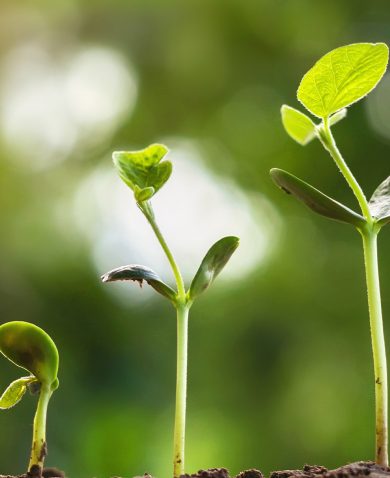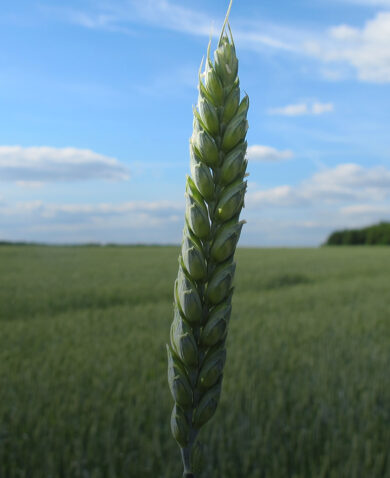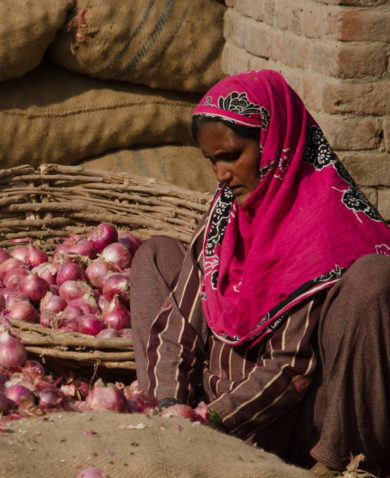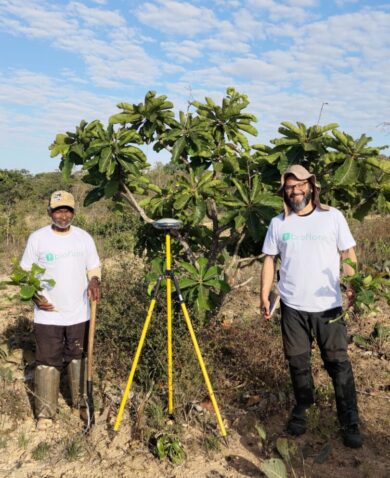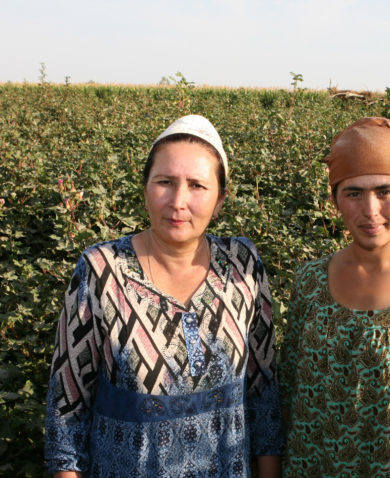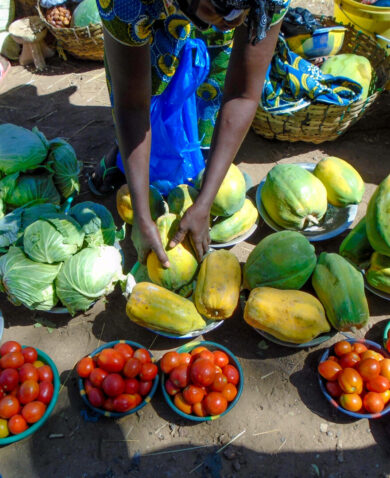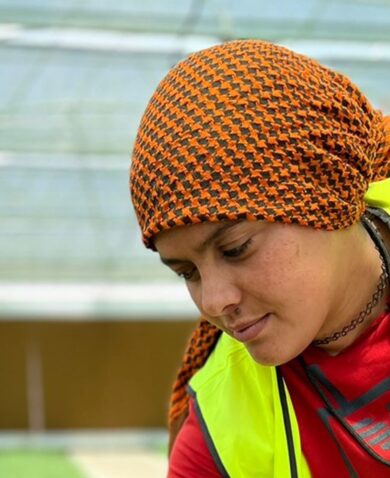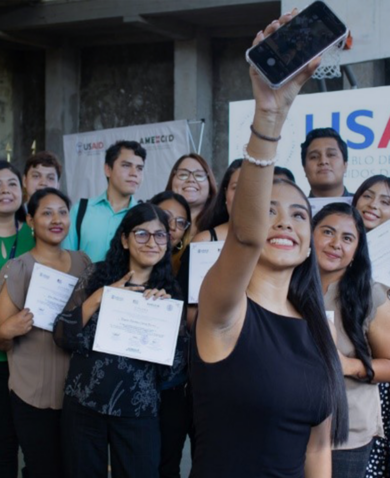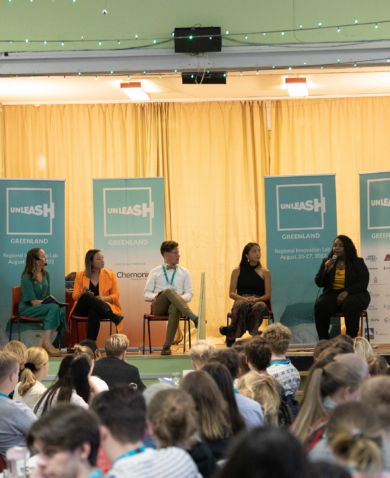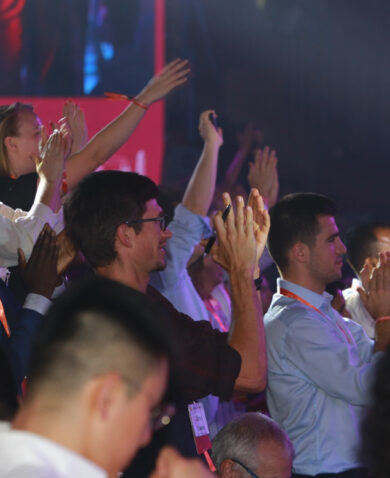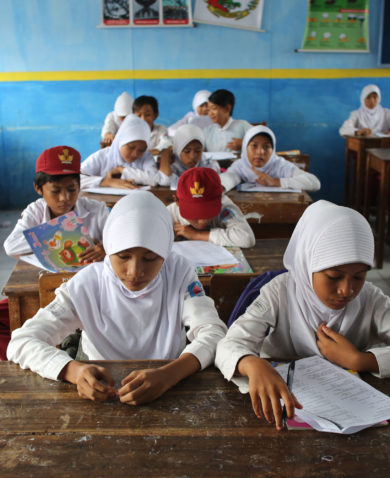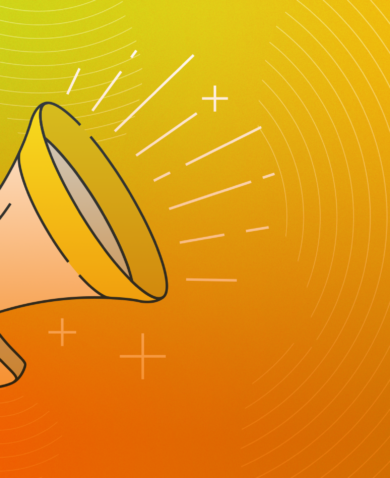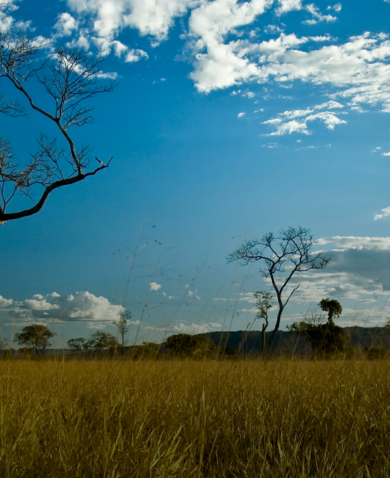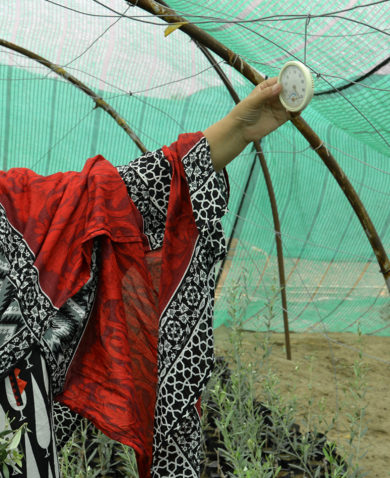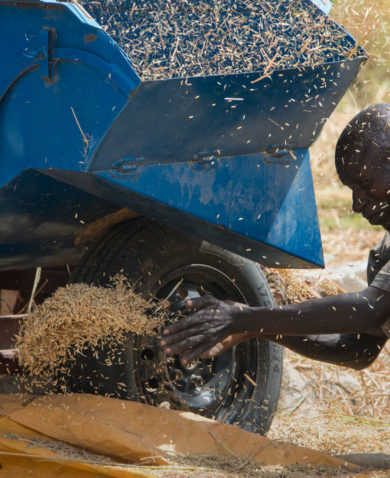
Fostering Youth-Led Farmer Services Enterprises in Uganda
October 10, 2017 | 4 Minute ReadThe Ugandan economy is largely reliant on agriculture, yet interest in farming among youth is low. Robert Anyang explores what it takes to motivate Uganda’s young people to work in the agriculture sector.
Uganda has the world’s second-youngest population with 8 million youth aged 15 to 30 and a growing job gap: Each year 400,000 youth enter the labor market and compete for 80,000 formal jobs. With a high population growth rate, job seekers are expected to reach 48 million by 2040. Reliant on agriculture, Uganda sits at a critical juncture. Uganda’s path forward lies in creating agriculture sector opportunities for rural youth. But, rural youth are generally not interested in agriculture as a primary career given perceptions of hard work and little financial reward. They may associate farming with struggles of their parents’ generation: poverty from subsistence farming with its low inputs and yields. Lack of land, capital, credit, and financial assets are also disincentives, especially for young women, and often lead to migration from rural to urban areas as youth seek better employment opportunities.
The USAID Feed the Future Commodity Production and Marketing (CPM) Activity harnesses market forces and uses innovative methods to increase the quantity and quality of coffee, maize, and beans that smallholder farmers produce and sell. CPM does this by 1) working with exporters and other buyers to extend a variety of services down value chains to improve production and marketing; and 2) building trust and win-win relationships between value chain actors to change processes and behavior. In particular, CPM focuses on incentivizing value chain middle actors to improve relationships up and downstream. In the process, the team learned that the middle of the value chain offers a real entry point for youth engagement.
Why does the agriculture sector need youth?
Given the aging farmer population — the average age of the Ugandan farmer is 54 — there is a growing demand for efficient production, postharvest, and marketing services by Uganda’s 6.4 million farmers. It is in the private sector’s business interest to engage a younger demographic for success and survival in the long term. More generally, it is in the interest of government, communities, and families that youth sit squarely in the sector as farmers, entrepreneurs, and employees so youth become a demographic dividend. To achieve this, youth mindsets need to be changed about agriculture’s livelihoods potential — that there is money to be made — dispelling negative perceptions and identifying multiple pathways to financial success. The aim is for youth to work in agriculture by choice, not by circumstance.
The opportunity
Assessing the limited long-term impacts of donor and government programs on key value chains and taking “doing business differently” to heart, CPM designed, piloted, adapted, and supported partners to scale up buyer-linked intermediary business models. CPM’s idea was to use system, process, and relationship changes that are taking shape through intermediary business models to sweep youth into the workforce. With many unemployed rural youth without access to land, there is an opportunity for them to establish farmer service enterprises, serving as village agents to traders, agro-processors, and apex producer organizations. As self-employed entrepreneurs or owners of a microenterprise, youth can provide pre-production, production, post-harvest, and marketing services to farmers often previously unserved (see graphic).
What did we learn?
CPM found that youth can make a living through farmer service provision. Youth have gone from landless poor and common laborers to self-employed buyer-linked village agents or, better still, microenterprise owners. Some are employing other youth as their enterprises grow. These enterprises, through linkages to farmers downstream and traders upstream, formalize informal work. When they offer more than one service, the impact is transformational: They make money, support their families, expand enterprises, employ others, and buy land to farm.
Based on our experience, priorities are:
- Application of best practices learned from intermediary business model pilots and scaling. Best practices include:
- Linkages between buyers and intermediaries, and between intermediaries and village agents.
- An optimal client base of 200 to 300 farmers for purchase of production.
- Value chain actor, extension agent, and project support to communicate financial benefits to farmers to help build a market for services.
- Quick and stable returns. Services that offer quick and stable returns demonstrate that “agriculture pays,” making a career in the sector more attractive. Key factors are cash on service delivery and a minimum monthly income of $400 (1.3 million UGX) to $4,800 annually (20 million UGX). If youth can earn this at home, they remain there, investing in their community and reducing exposure to unemployment, drug, and safety issues found in urban slums. By offering three or four services, a village agent can create a full-time-equivalent job for him or herself; earning $4,400 to $5,825 annually or 16 to 21 million Ugandan shillings (UGX). This is more than a Kampala bank teller earns — about 12 million UGX.
- Knowledge and skills. Rural youth lack farming knowledge and skills and have low literacy and numeracy rates. To succeed as village agents (or their employees), they need knowledge of good agricultural practices, genuine inputs, climate-smart and high-return technologies, (e.g., tractors, planters, portable inputs sprayers, mobile maize shellers, and biomass fuel dryers), basic literacy and numeracy, business plans, financial management, recordkeeping, and farm management practices.
- Information and communications technology (ICT), mechanization, and new technologies. Innovation and new approaches to farming have helped spark youth interest and are positives for farmers. For example, by applying a service package of ICT and mechanization, production costs are reduced by 30 to 40 percent.
What are the results so far and what’s next?
Over the last four years, CPM has used quantitative and qualitative evidence and learning to adapt and scale intermediary models, including making them attractive to youth. There is potential for growth in four ways:
- Existing service enterprise growth. As stated above, the optimal number of farmer clients for an agent is 200 to 300 for production output purchase. To allow for a 66 percent farmer adoption rate of other services that agents provide, 300 is preferred; youth agents currently have, on average, 150 farmer clients. With 6.4 million Ugandan smallholder farmers, dividing by 150 farmer clients per village agent, 42,600 jobs can be created.
- Service enterprise jobs. As youth agents build their microenterprises and offer more and more services, they require employees and hire youth. For example, one mobile maize sheller requires four workers. If each youth farmer service enterprise has four employees, then 128,000 more jobs are created.
- Youth farming. Youth entrepreneurs who stay close to home may inherit land for farming, using knowledge and skills they have gained, while other landless youth entrepreneurs may purchase land as their income grows and they see that there is money to be made in farming.
- Business and NGO adoption of model. Youth-led social enterprises, businesses, and NGOs are organizing and hiring youth to cover specific geographic regions. This includes Akorion, Amarin Group, Keirere Green Africa Agency, and coffee value chain village agent associations bulking coffee for increased bargaining power with traders.
$2.93 million
of inputs sold to farmers by youth agents
1,203
youth owners and youth employees providing range of services
215,420
metric tons of produce purchased from farmers by youth agents






